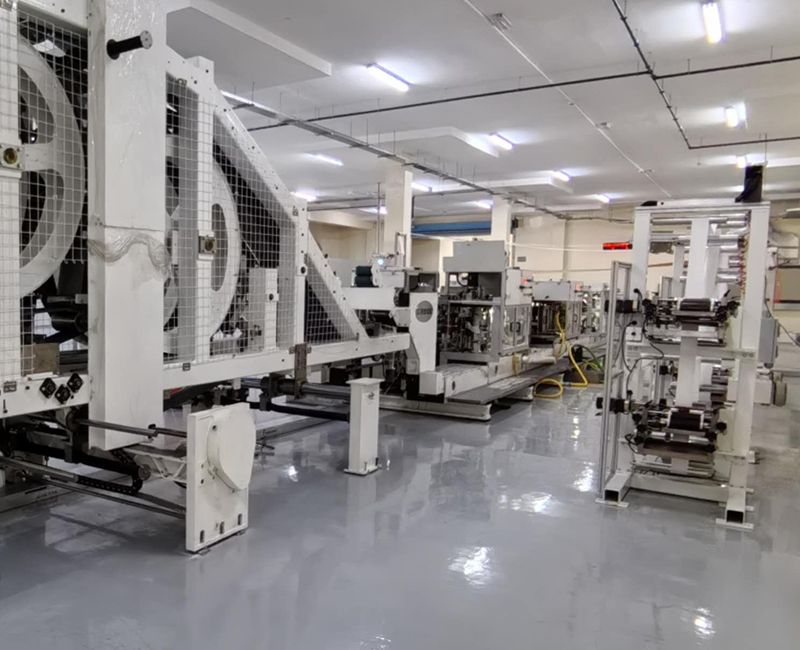Innovations in Paper Bag Machine Technology: Efficiency, Sustainability, and Modern Manufacturing
Release time:2025-05-23 Classification:Knowledge
The evolution of paper bag machine technology has revolutionized the packaging industry, offering solutions that align with global demands for efficiency, environmental responsibility, and precision. As businesses and consumers increasingly prioritize sustainability, advancements in machinery design and automation have positioned paper bags as a viable alternative to single-use plastics. This article explores the latest developments in paper bag manufacturing technology, focusing on its operational efficiency, eco-friendly capabilities, and adaptability to diverse industrial needs.

The Evolution of Paper Bag Machinery
Early paper bag production relied on labor-intensive processes with limited output. Modern machines, however, integrate cutting-edge engineering to automate every stage—from paper feeding and gluing to folding, pressing, and final cutting. Innovations such as servo-driven systems and programmable logic controllers (PLCs) ensure precise control over dimensions, handle attachment, and print alignment. These technologies minimize material waste while boosting production speeds to over 400 bags per minute in high-capacity models.
Key advancements include:
- Modular Design: Machines now feature interchangeable components, enabling rapid reconfiguration for producing different bag styles (e.g., flat, satchel, or twisted-handle bags).
- Energy Efficiency: Newer models incorporate regenerative braking systems and low-power standby modes, reducing energy consumption by up to 30%.
- Quality Assurance Systems: Integrated vision systems and sensors detect defects in real time, ensuring consistent output and reducing downtime.
Sustainability at the Core
Paper bag machines play a pivotal role in supporting circular economy goals. Manufacturers prioritize technologies that use water-based adhesives, recyclable materials, and uncoated kraft paper to enhance biodegradability. Additionally, innovations like "on-demand" production reduce overstocking, while precision cutting algorithms optimize raw material usage. Some machines now process recycled paper pulp directly, further lowering the carbon footprint of bag production.
A notable breakthrough is the integration of IoT-enabled monitoring, which tracks energy usage, maintenance needs, and production metrics. This data-driven approach allows operators to identify inefficiencies and implement sustainable practices proactively.
Automation and Smart Manufacturing
The shift toward Industry 4.0 has transformed paper bag machines into intelligent systems. Features such as touchscreen interfaces, remote diagnostics, and predictive maintenance algorithms streamline operations. For instance, automated glue application systems adjust viscosity and temperature dynamically, ensuring optimal adhesion without manual intervention.
Robotic arms are increasingly deployed for post-production tasks like sorting and packaging, enhancing workplace safety and throughput. Meanwhile, cloud-based software enables manufacturers to update machine parameters remotely, adapting to new designs or materials within minutes.
Versatility for Diverse Applications
Modern paper bag machines cater to a wide range of industries, including retail, food service, and pharmaceuticals. Adjustable settings accommodate varying paper weights (20–200 GSM) and handle types (flat, ribbon, or rope). Advanced printing units support high-resolution graphics, enabling brands to print logos or promotional messages directly during production.
For specialty applications, machines can produce laminated or grease-resistant bags by integrating extrusion coating systems. This flexibility ensures compliance with hygiene standards for food packaging or durability requirements for heavy-duty retail use.
Future Trends and Challenges
The next frontier for paper bag machine technology lies in enhancing scalability for small businesses. Compact, semi-automatic models are gaining traction, offering affordability without compromising quality. Researchers are also exploring biomaterials like hemp-based paper and algae-derived coatings to further improve sustainability.
However, challenges remain, such as balancing high-speed production with energy consumption and maintaining cost-effectiveness while adopting advanced materials. Collaborative efforts between engineers and environmental scientists will be critical to address these hurdles.
Paper bag machine technology exemplifies how industrial innovation can align economic objectives with ecological stewardship. By prioritizing automation, resource efficiency, and adaptability, modern machinery not only meets the growing demand for sustainable packaging but also sets new benchmarks for manufacturing excellence. As regulations on single-use plastics tighten worldwide, continued advancements in this field will solidify paper bags as a cornerstone of responsible packaging solutions.
The industry’s progress underscores a clear message: the future of packaging is not just automated—it’s sustainable, intelligent, and relentlessly forward-thinking.






